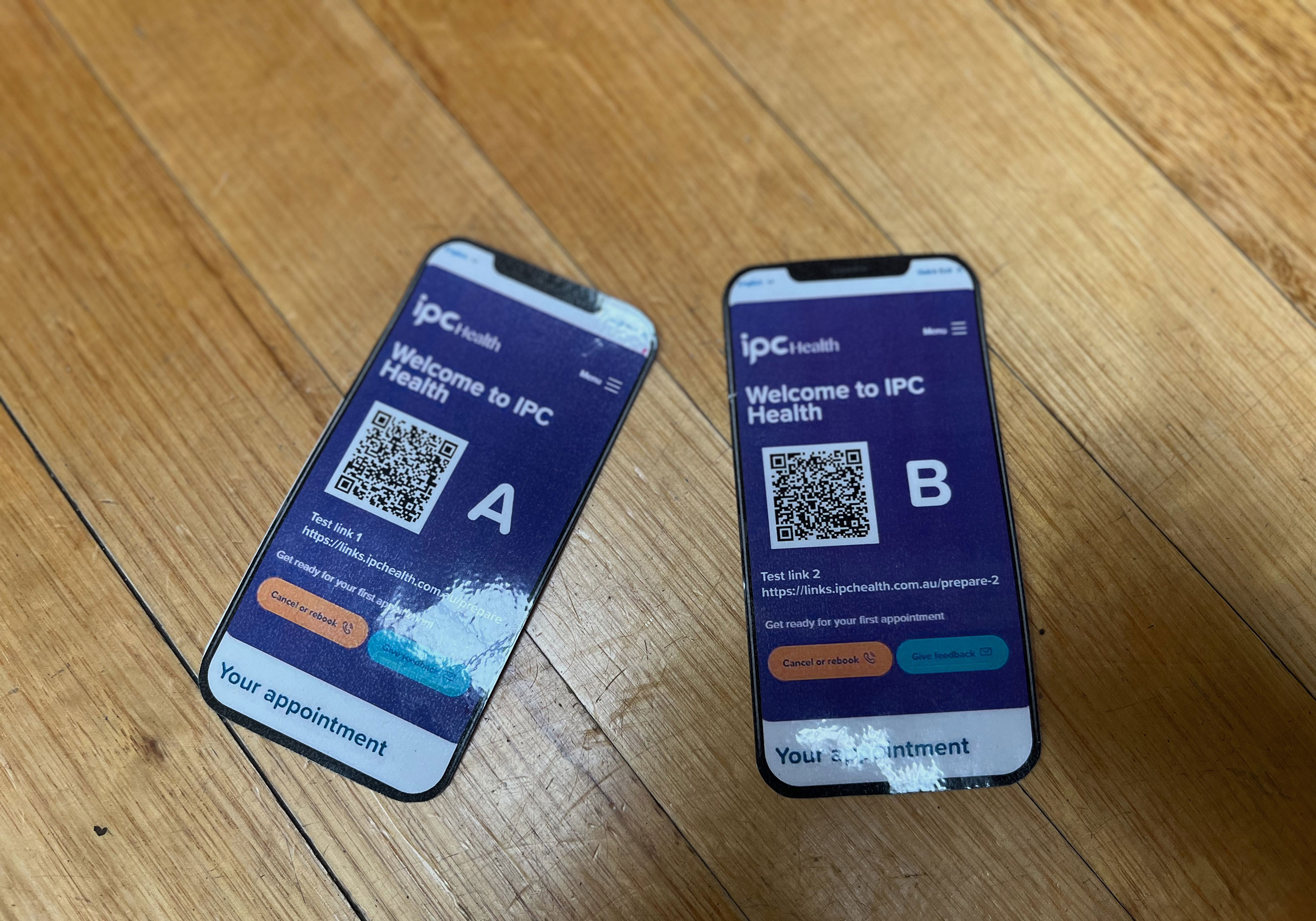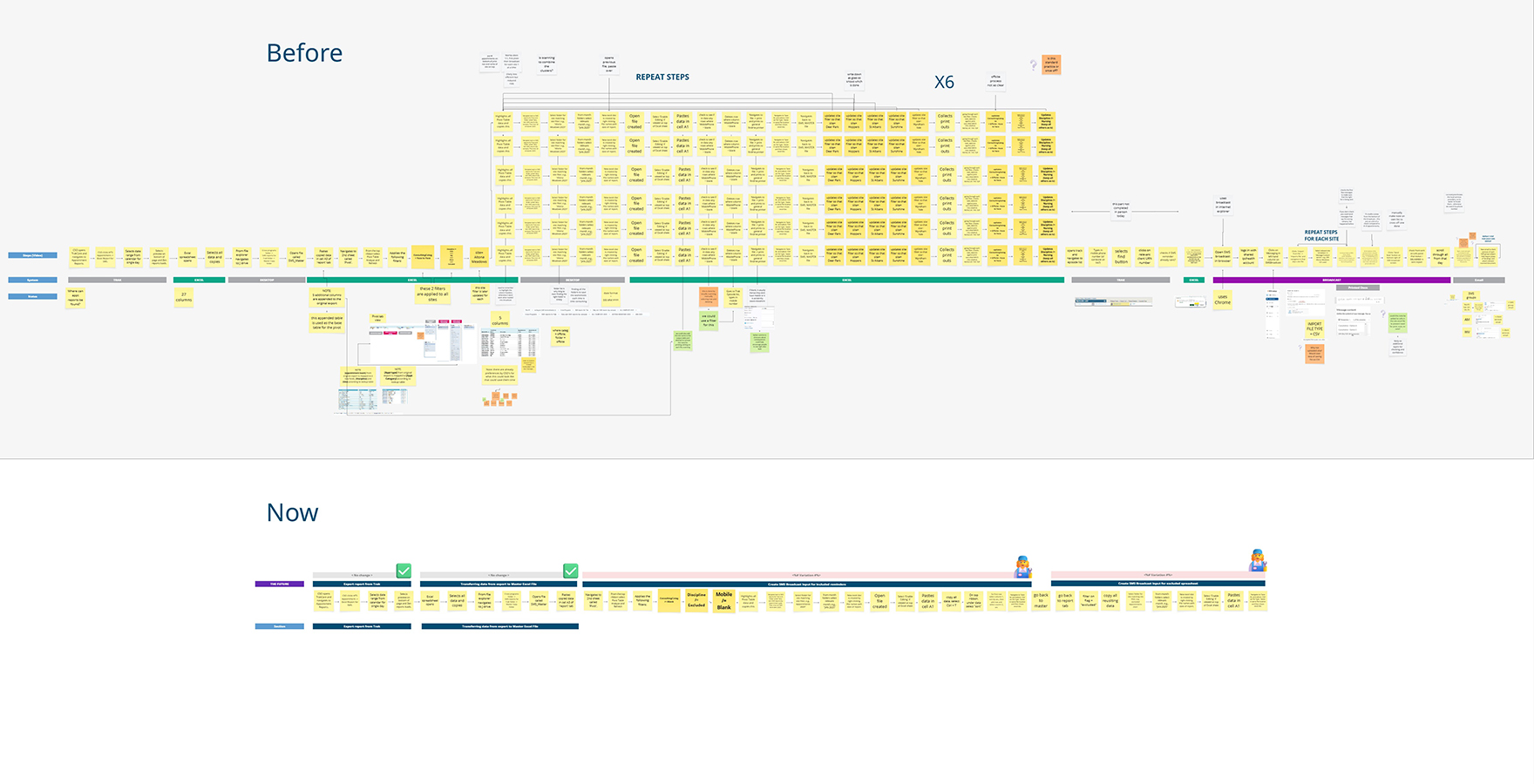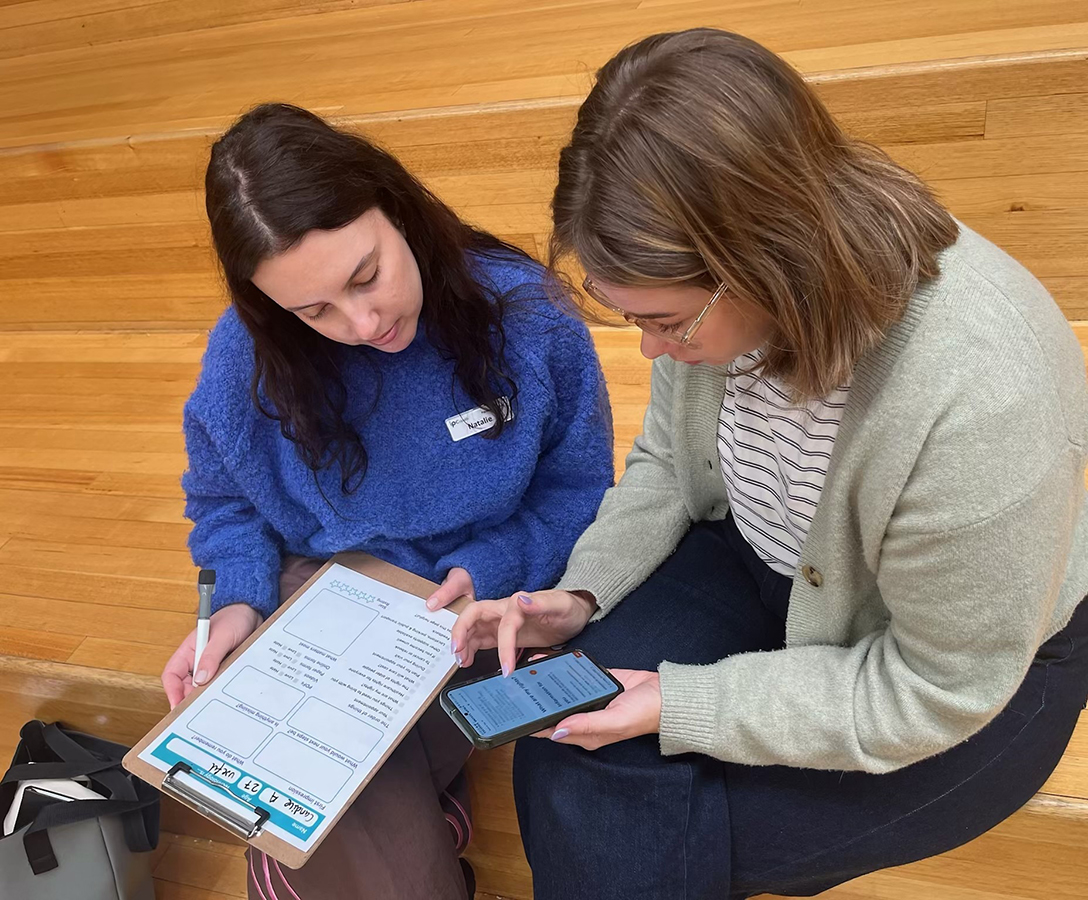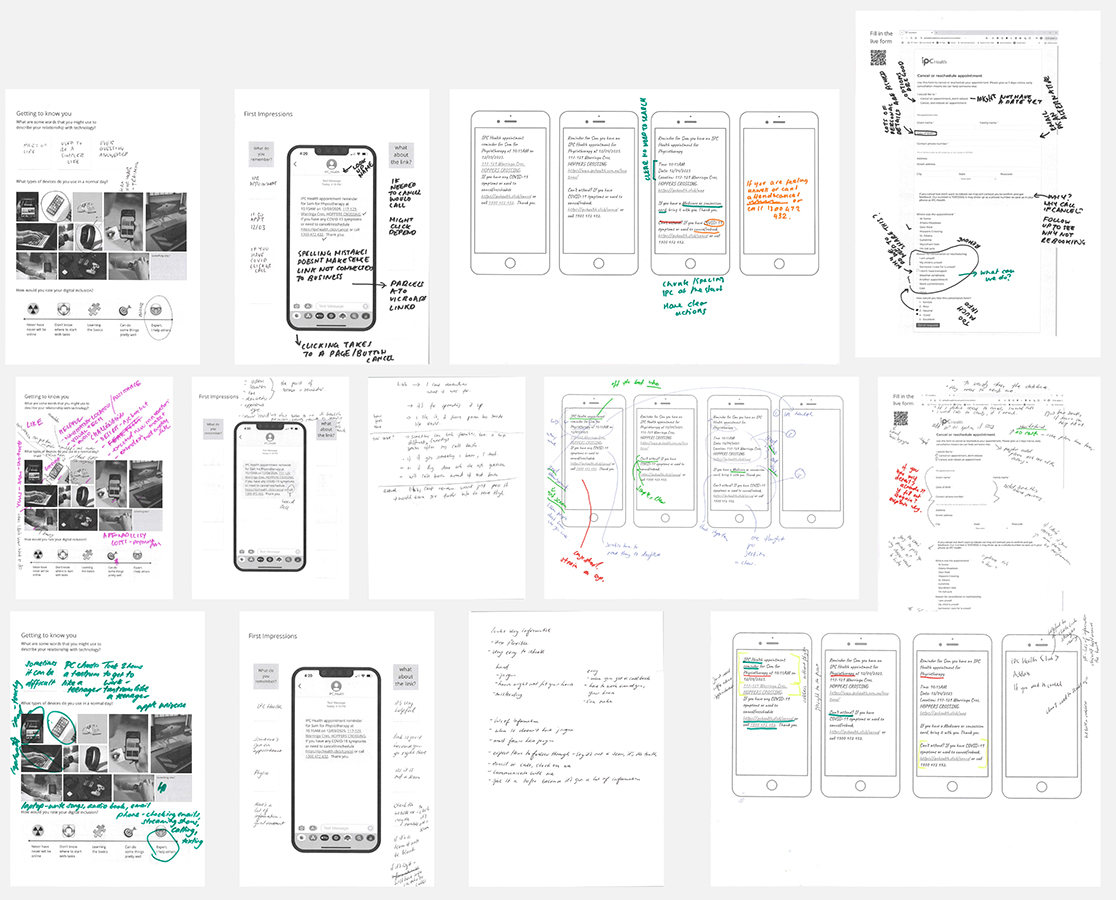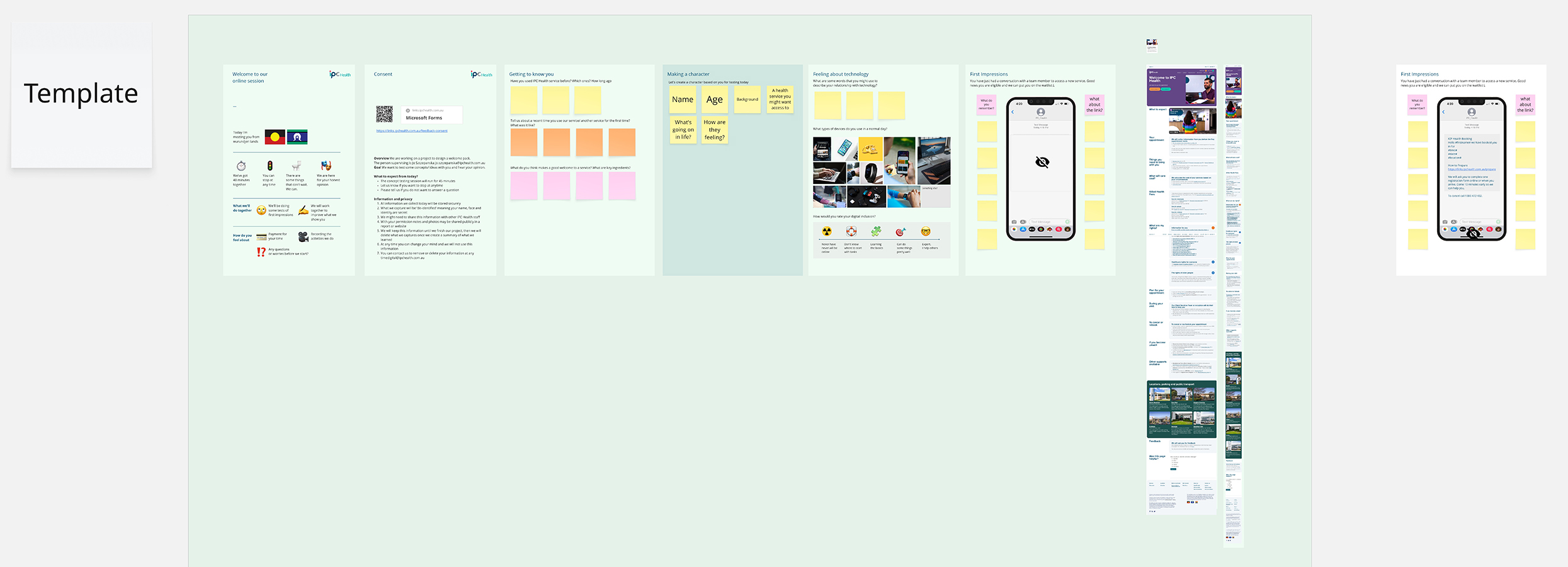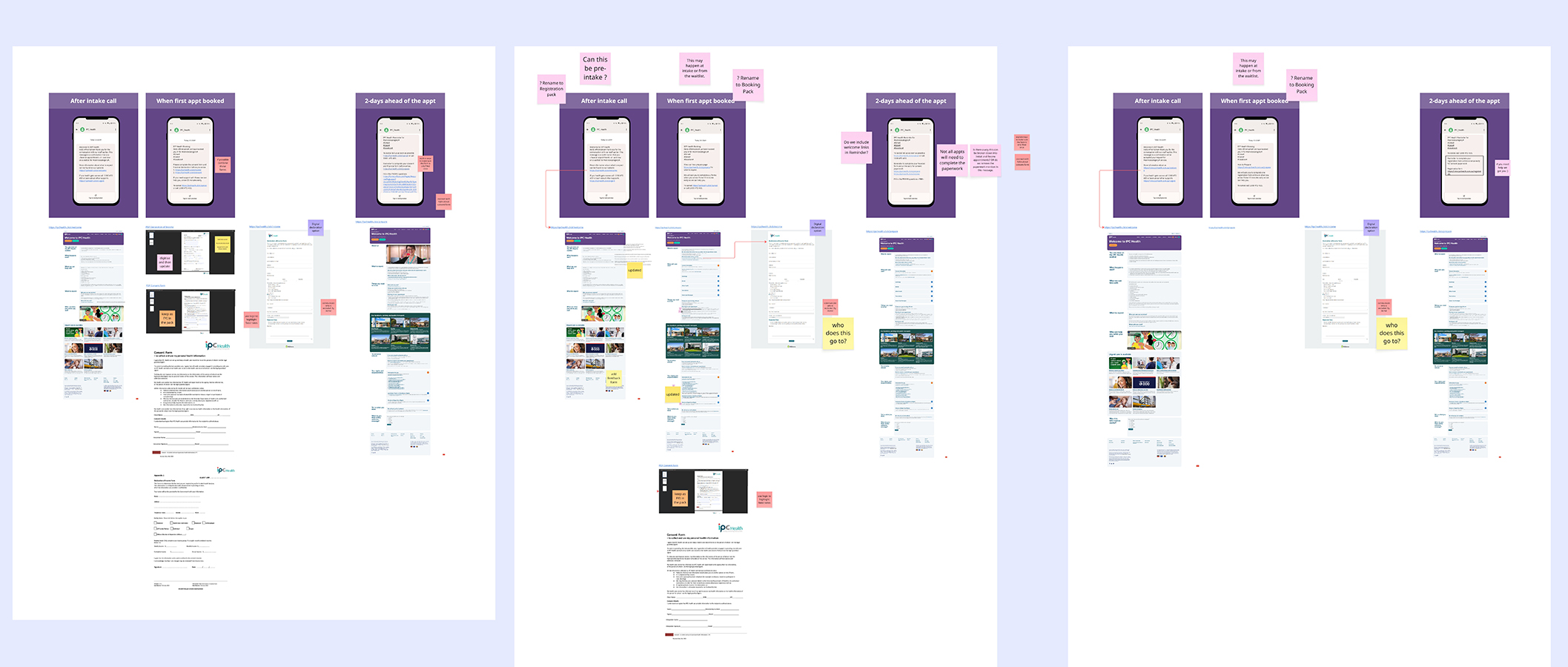Initial design research was undertaken to explore the current state and identify pain points that could be leveraged as opportunities to improve the system.
This research included:
- Observational time-in-motion studies shadowing Client Services staff
- Staff workshops and interviews involving 17 staff members (inclusive of Client Services, IT, Clinicians, Business and Performance team)
- System, process, and stakeholder mapping
Design exploration continued until saturation was reached prior to moving into solution ideation. Investigation and development of potential alternative solutions then occurred, followed by testing of the most promising opportunities. Testing in the project utilised PDSA Improvement cycles and close collaboration with frontline staff who had previously been engaged in the exploration phase.
Community members aged 18–78 were recruited as community advisors and participated in usability testing using:
- 5-second tests for first impressions
- Pens of Power to refine message clarity and trust
- Observation of use to discover errors and barriers to action
- User tests at community events and online
Creating a design solution extended to:
- Mapping and UX testing legacy IT systems
- Comparing, vetting, and securing new SMS solutions
- Rewriting policies, procedures, and manuals
- Improving wording on templates
- Designing improved tools to transfer data across systems efficiently
- Communicating and coaching staff on the new process
The final design reduced the process from hours to minutes and enabled automatic reminders for more appointment types. The design brief was met and stakeholder expectations exceeded — both with measurable efficiencies and reported improved experience by both staff and clients.
This project highlights how design in healthcare must design for core systems and processes to deliver meaningful and lasting improvements.

